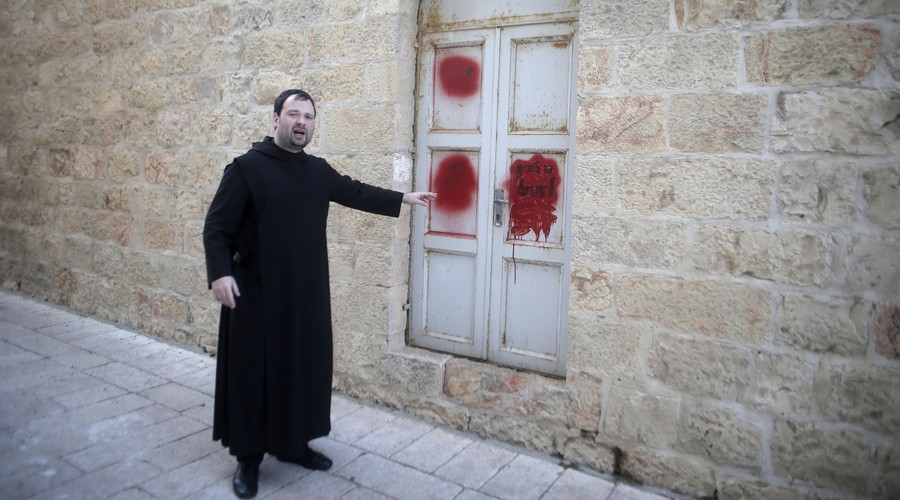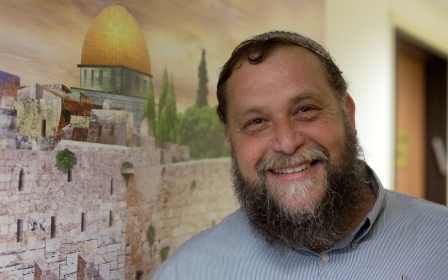Israeli teen arrested for scrawling 'kill the pagans' on historic church

A 16-year-old in Israel has been arrested for anti-Christian graffiti sprayed on a wall of a Jerusalem abbey built where tradition says the mother of Jesus died, Israeli police said on Wednesday.
The graffiti, discovered on Sunday, was written in Hebrew on an outside wall of the Dormition Abbey and included phrases such as "kill the pagans," "death to the Christian unbelievers, enemies of Israel" and “Christians to hell”.
The incident was similar to previous acts blamed on hardline Jewish groups supportive of illegal settlements in the West Bank.
The suspect was to appear in court on Wednesday, a day after he was arrested, police said.
During the Israeli government’s weekly cabinet meeting on Sunday, Prime Minister Benjamin Netanyahu condemned the attack, saying there was “no place for actions like these” in Israel.
The Benedictine abbey is located on Mount Zion across from east Jerusalem's Old City and next to the site where Christians believe Jesus's last supper occurred.
It has been previously hit by arson and vandalism, and in 2012 and 2013 similar anti-Christian graffiti was scrawled on the walls.
Vatican efforts to negotiate greater rights at the neighbouring Upper Room, where the Last Supper is believed to have occurred, have sparked opposition from nationalist and Orthodox Jews, who revere part of the building as the tomb of King David.
Pope Francis celebrated a mass at the Upper Room during a visit in 2014.
Shortly after his visit, an unknown arsonist set fire to a visitor book in the abbey.
Hardline Jewish groups have targeted Palestinians, Christians and even Israeli military property in "price-tag" attacks - a term that indicates there is a price to be paid for moves against Jewish settlers.
Middle East Eye propose une couverture et une analyse indépendantes et incomparables du Moyen-Orient, de l’Afrique du Nord et d’autres régions du monde. Pour en savoir plus sur la reprise de ce contenu et les frais qui s’appliquent, veuillez remplir ce formulaire [en anglais]. Pour en savoir plus sur MEE, cliquez ici [en anglais].




